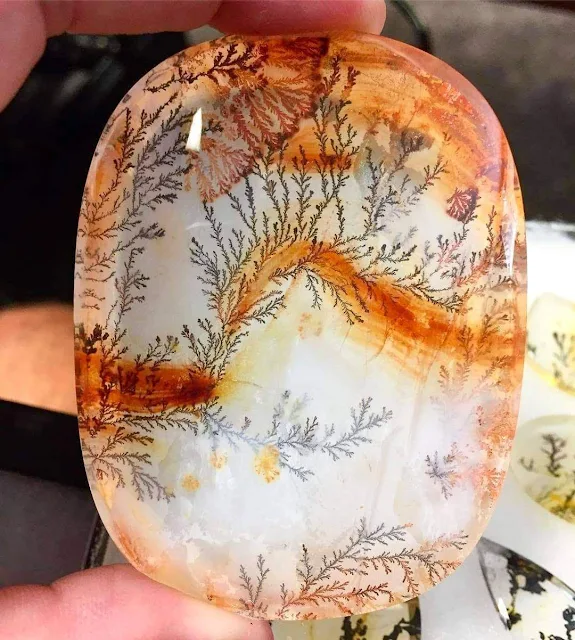Dendritic Crystal and Minerals
Dendrite minerals are natural tree-like or moss-like formations found on or in rocks and minerals. These fascinating patterns form when an element or mineral migrates and branches outward from a point of origin, mimicking the appearance of tree branches or veins. The term "dendrite" comes from the Greek word "dendron," meaning "tree."
A single dendritic branch extends until reaching a point where growing various new branches becomes more favorable for some unknown reason. This growth is a result of anisotropic growth rates in different directions, often influenced by environmental factors like temperature, pressure, and chemical concentration.
Dendritic patterns typically form in environments with rapid changes in temperature or mineral solution concentration, such as volcanic or hydrothermal settings. The study of dendritic crystals provides insights into crystal growth mechanisms, mineral formation, and geochemical conditions. These patterns are also of interest in fractal geometry and the study of pattern formation in nature. Due to their unique and intricate patterns, dendritic minerals are highly valued by collectors and are often used in jewelry and decorative items.
 |
| Dendritic Crystal and Minerals |
Examples of Minerals with Dendritic Patterns
Manganese Oxides:
- Pyrolusite: This mineral frequently shows dendritic growth, appearing as black, tree-like inclusions on the surface of other rocks or minerals.
- Psilomelane: Another manganese oxide that forms intricate dendritic patterns, often found in limestone and other sedimentary rocks.
Copper: Native copper can form dendritic patterns, especially in the oxidized zones of copper deposits. These dendrites are highly prized by mineral collectors for their striking appearance.
Silver: Native silver can also form dendritic structures, particularly in hydrothermal veins. These dendritic silver specimens are both scientifically interesting and aesthetically pleasing.
Gold: Native gold can exhibit dendritic growth, often found in quartz veins. These dendritic gold specimens are rare and highly valued for both their beauty and their mineralogical significance.
Opal: Appearance: Some opals display dendritic inclusions that look like tiny ferns or trees.
Uraninite: Uraninite and other uranium minerals can form dendritic patterns, particularly in hydrothermal deposits. These patterns can provide clues about the conditions under which the minerals formed.
Limonite: Limonite, an iron oxide, can display dendritic patterns, especially on the surfaces of sedimentary rocks. These patterns are formed by the precipitation of iron minerals from groundwater.
 |
| Manganese dendrites on a limestone bedding plane from Solnhofen, Germany. |
In paleontology, dendritic mineral crystal forms are often mistaken for fossils. These pseudofossils form as naturally occurring fissures in the rock are filled by percolating mineral solutions. They form when water rich in manganese and iron flows along fractures and bedding planes between layers of limestone and other rock types, depositing dendritic crystals as the solution flows through
 |
| Dendritic Quartz From Brazil. |
How Dendrite Minerals form
Growth Conditions: Dendritic crystals form when there is a rapid change in temperature, high levels of supersaturation, or both. These conditions cause the crystals to grow rapidly in certain directions, leading to the branching, fractal-like structures characteristic of dendritic patterns.
Fluid Movement: In many cases, dendritic patterns form as mineral-rich fluids move through cracks and fissures in rocks. As the fluid evaporates or cools, minerals precipitate out and form the dendritic structures.
Dendritic crystal habits in minerals are notable for their tree-like, branching patterns, which form under specific environmental conditions. Common minerals exhibiting these patterns include manganese oxides, native copper, silver, gold, iron oxides, and uranium oxides.


%20(1).webp)





